When is the right time to introduce them to your other, older dog to make the best introduction between them?
Getting a new puppy is a big commitment, and the idea of introductions can feel like a terrifying step, because your older dog is so much older, and could (if so inclined) do damage…
I’ve done a lot of doggy introductions, either as a trainer or as my former dog walking self, and handling it takes a lot of confidence, a lot of understanding, and it can be a real point of trepidation when you bring home a new puppy. You don’t know how they’re going to act, you don’t know if they’re going to feel totally affronted…
Whilst the latter isn’t likely – I want to take some time to discuss with you when the best time to introduce your dog and your puppy, give some tips, and some things to think about whilst you go through that introduction! Because you can do this! You can do it, and do it safely. No matter what emotional baggage your first dog has you can introduce them successfully, please don’t fret.
How do I know?
Because I’ve done it! Indie (as we know) has fear based reactivity towards dogs – yet – I moved him four thousand miles, and introduced him to two coonhounds within 24hrs.
If I can do that? Then you can do this. Ready?
Great.
The Ideal Time For Introductions
This may surprise you, but the best time for introductions for your older dog to your puppy? Is the window of your puppy’s life from six to eight weeks – yep – before puppy comes home!
This window represents the period after their first parvovirus vaccination (6 weeks) and before the first fear phase (normally 8 weeks), which is an ideal time for learning and socialising with safe dogs, and especially those that they’re going to share their life with.
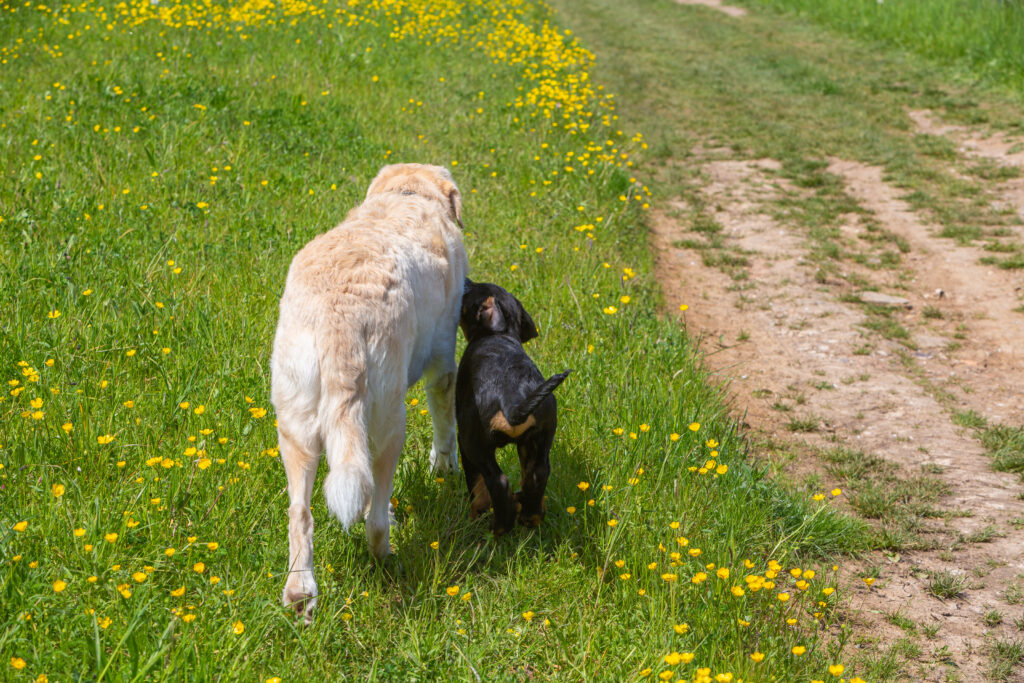
What You Need
✅ A Great local-ish breeder!
✅ A fully vaccinated dog
✅ A nicely socialised dog
I am a thorough believer in two meetings of puppy before puppy comes home – but – if you do have an older dog in your home, then it’s a great idea to schedule a third where you introduce your puppy to your older dog.
During the early ages of puppyhood, there is a magic phase before the first fear phase kicks in, wherein whatever your puppy experiences, they accept it as perfectly normal. Capitalising on this phase? Is really important for introductions and the phase I want you to be aware of. (Please remember that the first fear phase happens earlier in some breeds than in others! So talk to your breeder!)
So, before you head there, make sure that your older dog is content in strange situations, is well socialised and doesn’t typically have issues with puppies – or as close to this as is physically possible. Not to mention about 4 weeks before your visit and introduce your two future fur-sibs, make sure that all vaccinations are up to date and square so you’re not exposing puppy to anything that might be life threatening or similar.
Keep the meeting quite brief, and try to be as relaxed as you can be so that your dog feels comfortable. You want soft body language, and relaxation between them both ideally!
As you see relaxation (it may take a little bit of time for excitement to subside) but when it does? Allowing them to experience each other’s space is a great idea, limited time, limited interaction, but small gentle methods.
If You Can’t Introduce At The Breeders, Or When They Get Home.
Then you’ll be introducing your dog and your puppy at home. Depending if your dog guards, or if they have a comfortable zone, pop your dog on a leash, along with puppy and borrow a second set of hands (if you don’t have some available), and just make sure that there is distance when there needs to be.
Manage the interaction to create positive experiences for both parties, to ensure a great, and lasting friendship between them.
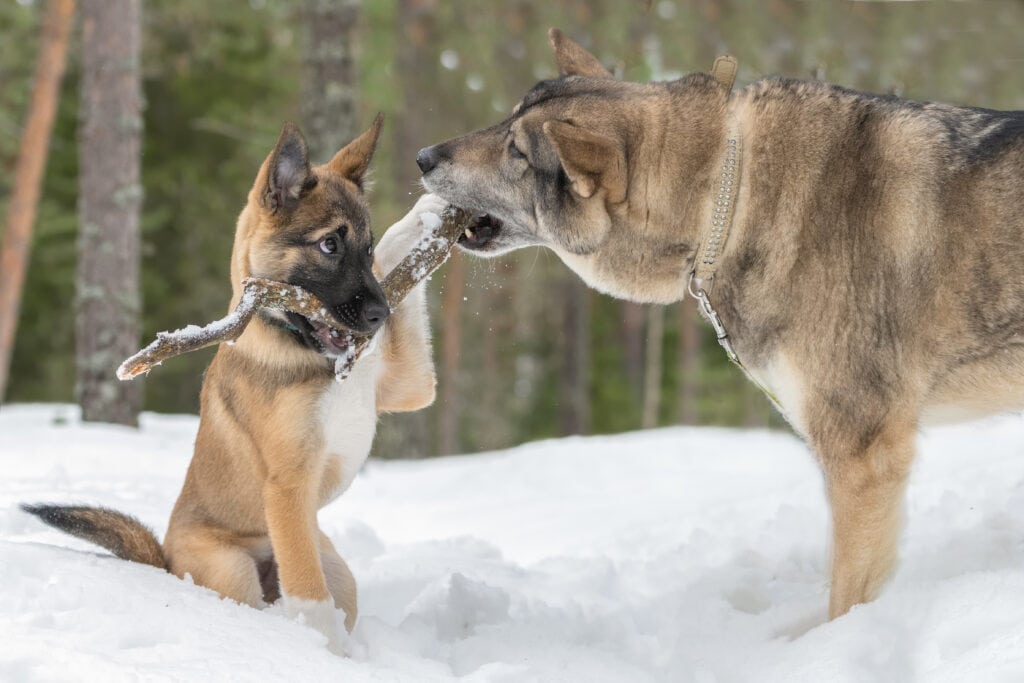
What To Do If Your Existing Dog Is Dog Aggressive
Typically? I want you to consider doing the work to desensitise and counter-condition your dog before you agree to bring home a puppy.
This is simple, but time consuming. There’s a great self study course here, and my advice also. If you’re still struggling it’s a great idea to involve a professional trainer as they can help you to make progress.
Once your dog has learned how to cope, and you can effectively manage the situation, try introducing them. Keep both on a leash, or try the other side of a barrier like a baby gate to start, and remember, muzzle training is entirely responsible at this stage!! You’re protecting other dogs but also your own dog.
It can feel wicked at times, but in this situation, your muzzled dog will be great peace of mind to you, and your breeder to ensure that introductions are entirely safe.
You may even consider the breeder holding the puppy in arms in order to manage the distance of the greeting.
Brush Up On Body Language
Look into and learn what acceptable body language is between two dogs, your puppy will likely be quite ‘rude’ to start with, which is understandable (it’s like when kids tell you the truth in the most brutal way possible). So, try and focus on when your existing, older dog is comfortable and uncomfortable so as to manage the situation appropriately.
If you need more help on this? Consider Lili Chin’s Doggie Language, and I’ve also written a post on appropriate play.
How To Turn This Meeting Into A Lasting Experience
Making sure that this is a good greeting is the first step in multi-dog-household harmony! The next steps? Look a little like this…
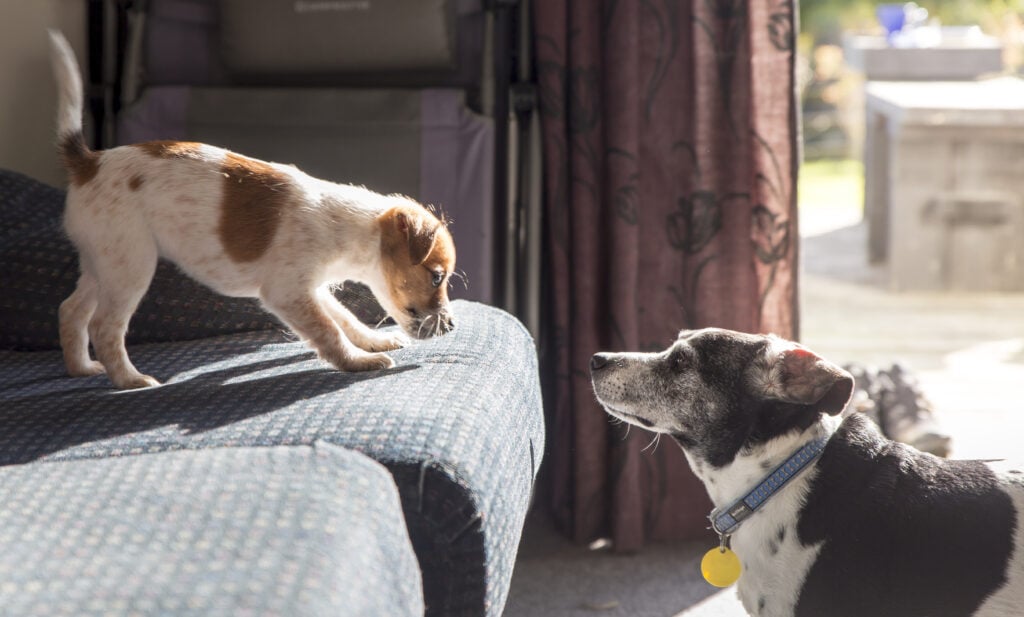
1 – Make Sure To Reign In Either Dog When They Go Over The Top
This is especially important when there is a big age gap, or size gap between your dogs. Remember body language throughout, if either becomes overbearing, more forceful or similar, stepping in and diverting their attention into a nice sit and a lay down for a reward is a great way to reinstill the balance they need.
Play is not play if it’s only fun for one.
2 – Train Both – Don’t Neglect One Because They’re ‘Done’ Or ‘Too Much Work’.
It’s a little bit like what happens when you have more children, the second child gets away with a lot more than the first – but that really cannot happen. Keep your training tight (if you need help, I can do that!), and make sure that you train both dogs as individuals, and then when they’re succeeding, train them together.
Play is not play if it’s only fun for one.
3 – Feed Separately
So often people think dogs should feed happily together, but that’s often not the case. One may steal, one may gain allergies, one may get defensive. It’s always easier to avoid a problem than to treat a problem. So feeding separately from the start is a great idea.
It’s kind of thing where dogs are instantly less defensive if they can just eat and not pay attention to others. It allows for destressing and doesn’t put a spike on their daily stress-o-meter.
4 – Give Each Dog Love, Apart, And Together
Dogs know when you favour another. And it can make the other act out. Try and be as balanced as possible with them and don’t be totally obvious with your first dog, or your second dog. Try and keep the peace and treat them as equals (even if one’s a chihuahua and one’s a tibetan mastiff).
5 – Give Each Dog Their Own Downtime & Bed
This is really important. Dogs need sleep – both your adult dog and your puppy. It’s one of the things that keeps them in balance and in harmony with the world around them — I think it’s the reason I love them and sympathise with them!
So, ensuring both dogs get proper rest, that puppy doesn’t bug their older sibling when they’re trying to sleep, or that your first dog is encroaching on puppy’s bed (very common by the way! Just remind them whose is whose and if you need to physically separate, crates or play-pens are super useful.
Happy Dogs, Happy Home!
Taking on more than one dog is a challenge, but with proper set up, conscientiousness, and fair treatment, they’re bound to be happy and content – so you’re setting them (and you!) up for success!
If you need a little more help raising your puppy to becoming a good dog? Then go get our puppy development emails, Pupdates! They’re the information you need to get ahead of your puppy!

Author, Ali Smith
Ali Smith is a professional, qualified, and multi-award winning trainer is the founder of rebarkable. She has always believed animals deserve kindness and champions force free methods. Believing that dog guardians will all choose the kindest options if proper information is provided, she aims to help all dog guardians who need it and make dog training as accessible as possible
Ali lives win Maryland, US with her husband and her three dogs.

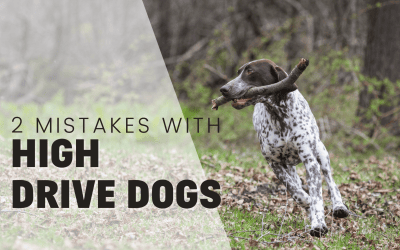
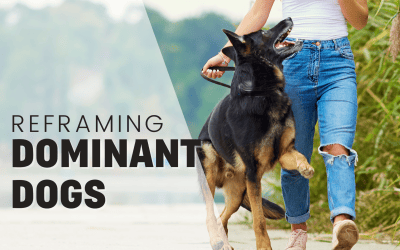
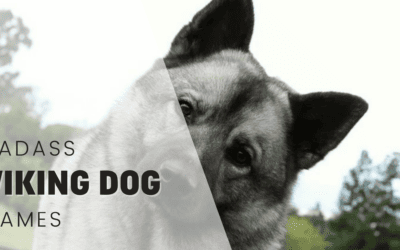

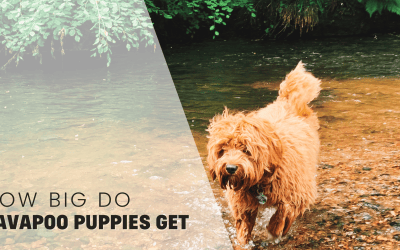
0 Comments